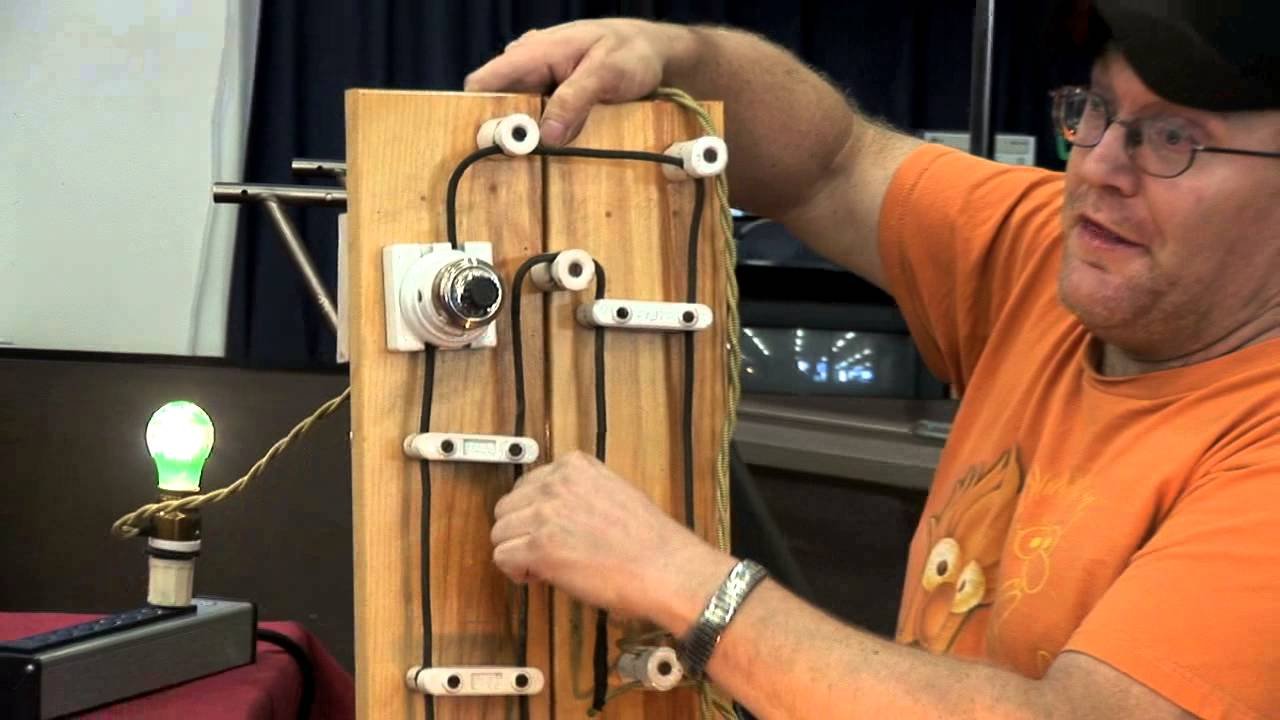Knob and tube wiring (K&T) was a popular method of electrical wiring used in homes built from the 1880s through the 1940s. While it was a significant advancement in its time, K&T wiring presents unique challenges and safety concerns in modern homes. Understanding its components, risks, and how to manage it is crucial for homeowners, especially those in older properties.
What Is Knob and Tube Wiring?
Knob and tube wiring consists of two separate copper conductors—one hot (live) and one neutral—that are run through walls and ceilings. Ceramic knobs support the wires, and the wires pass through porcelain tubes as they go through wooden framing members like studs and joists. This design allows for air circulation around the wires, helping to dissipate heat. The system lacks a ground wire, which is a significant difference from modern electrical systems.
How Knob and Tube Wiring Works
- Knobs: Ceramic knobs are nailed to the framing members to support and secure the wires, preventing them from sagging or coming into contact with combustible materials.
- Tubes: Porcelain tubes protect the wires as they pass through wooden studs and joists, reducing the risk of friction or heat damage.
- Insulation: The wires are typically insulated with rubber or cloth, materials that can degrade over time, leading to potential safety hazards
Advantages of Knob and Tube Wiring
While considered outdated, knob and tube wiring has some characteristics that were beneficial at the time:
- Heat Dissipation: The separation of the hot and neutral wires allows for better air circulation, which can help in dissipating heat.
- Durability: The ceramic components (knobs and tubes) have a long lifespan and can withstand high temperatures.
- Simplicity: The system is straightforward, with fewer components, which made installation simpler during its time.
Risks and Disadvantages
Despite its advantages, knob and tube wiring poses several risks:
- Lack of Grounding: The absence of a ground wire means there’s no safe path for electricity to follow in case of a fault, increasing the risk of electric shock.
- Aging Insulation: Over time, the rubber or cloth insulation can become brittle and deteriorate, exposing live wires and increasing the risk of short circuits or fires.
- Overloading: Knob and tube wiring was designed for lower electrical loads. Modern appliances and electronics can overload the system, leading to overheating and potential fires.
- Improper Modifications: Many older systems have been modified or spliced with modern wiring, often without proper safety measures, creating hazards.
- Insurance Challenges: Homes with knob and tube wiring may face difficulties in obtaining homeowner’s insurance, or policies may be more expensive due to the associated risks.
Identifying Knob and Tube Wiring in Your Home
You might still have knob and tube wiring if your home was built before the 1950s. Look for:
- Ceramic Knobs and Tubes: Visible in attics, basements, or behind walls.
- Two-Prong Outlets: Indicating the absence of a ground wire.
- Fuses Instead of Circuit Breakers: Older homes often use fuses, which are less reliable than modern circuit breakers.
- Cloth or Rubber Insulation: Older wiring insulation materials.
Safety Precautions and Maintenance
If you have knob and tube wiring:
- Regular Inspections: Have a licensed electrician inspect the system regularly to identify any potential issues.
- Avoid Overloading Circuits: Do not connect modern high-wattage appliances to the system.
- Proper Modifications: Any necessary upgrades or repairs should be done by a professional to ensure safety.
- Insulation Considerations: Avoid covering knob and tube wiring with insulation, as it can cause overheating.
Replacing Knob and Tube Wiring
Upgrading to modern wiring is often recommended for safety reasons. The process involves:
- Assessment: A thorough evaluation by a licensed electrician to determine the scope of replacement.
- Planning: Designing a new wiring layout that meets current electrical codes and your home’s needs.
- Installation: Carefully removing old wiring and installing new, grounded wiring systems.
- Inspection: Ensuring the new system is up to code and safe for use.
Conclusion
Knob and tube wiring played a pivotal role in the early development of residential electrical systems. However, its limitations and potential hazards make it outdated and pose risks in modern homes. Homeowners should be aware of the presence of knob and tube wiring and take appropriate measures to ensure safety, including regular inspections and considering upgrades to modern wiring systems.
Frequently Asked Questions (FAQs)
1. Is knob and tube wiring still legal?
Yes, many areas allow knob and tube wiring; however, local regulations often restrict its use, especially in new constructions. Local building codes and regulations vary, so it’s essential to consult with a licensed electrician familiar with your area’s laws.
2. Can I replace knob and tube wiring myself?
No, replacing knob and tube wiring should only be done by a licensed electrician. The process involves complex electrical work that requires professional expertise to ensure safety and compliance with local codes.
3. How can I tell if my home has knob and tube wiring?
Look for ceramic knobs and tubes in attics or basements, check for two-prong outlets, and inspect the insulation material. If you’re unsure, hire a licensed electrician to conduct a thorough inspection.
4. Will insurance cover homes with knob and tube wiring?
Insurance coverage varies by provider and location. Some insurers may offer coverage with specific conditions, such as a professional inspection or required upgrades. It’s advisable to check with your insurance company for their policies regarding knob and tube wiring.
5. What are the costs associated with replacing knob and tube wiring?
The cost can vary widely depending on the size of the home, accessibility of the wiring, and local labor rates. On average, homeowners can expect to pay between $8,000 and $15,000 for a complete replacement. It’s best to obtain multiple quotes from licensed electricians for an accurate estimate.
